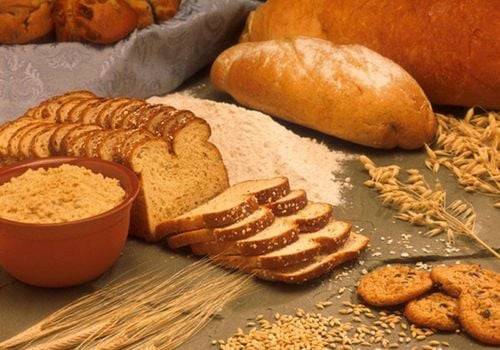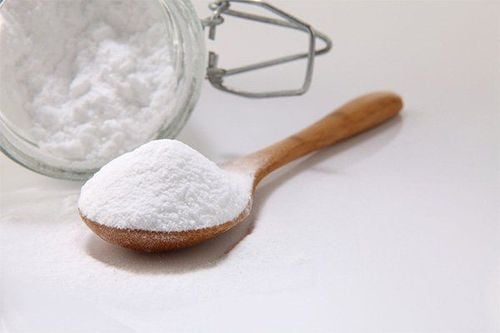This is an automatically translated article.
Banh mi is one of the most popular foods in Vietnam as well as around the world. Bread is usually made from wheat, or alternative grains, yeast, and other ingredients. Bread after buying or after making will only ensure freshness and nutrition for a certain time. After this time, it will start to produce mold bacteria that are harmful to the body when used.
1. Shelf life of bread
Shelf life of bread kept at room temperature ranges from 3 to 7 days, but can vary depending on ingredients, type of bread and storage method.
2. Common breads and ingredients used
Breads, whole-wheat breads and other baked goods sold in grocery stores often contain preservatives that prevent mold, thereby increasing their shelf life. Homemade, preservative-free cakes usually last for 3 to 4 days at room temperature.
Some common bread preservatives include calcium propionate, sodium benzoate, potassium sorbate, and sorbic acid. Lactic acid bacteria are a natural substitute that produces anti-mildew acids. Gluten-free breads are often more susceptible to mold due to the higher moisture content in the bread and they are limited in the use of preservatives.
This is why gluten-free cakes are often sold frozen instead of fresh. On the other hand, dry bread products, like breadcrumbs or crackers, often have the longest shelf life because the low humidity is not suitable for mold growth. The types of rolls containing a lot of oil, using a lot of eggs and milk also have a very low shelf life because of the easy oxidation and rancidity of the above ingredients.

Bánh mì nướng có hạn sử dụng lâu hơn
3. How to preserve
The shelf life of bread also depends a lot on how it is stored. Bread is more likely to spoil if stored in a warm and humid environment. To prevent mold, this food should be kept at room temperature or colder. Fresh homemade bread with no preservatives, kept at room temperature can be used for 3 to 4 days. Store-bought varieties contain anti-mold agents that, when stored at room temperature, can keep for up to 7 days.
Storage at low temperatures can increase the shelf life of both commercial and homemade bread from 3 to 5 days. When using low-temperature storage, users should pay attention to packaging carefully so that the cake does not dry out and does not appear moisture inside the package.
Bread after freezing can have a shelf life of up to 6 months. While freezing cake may not kill all harmful bacteria, it can prevent them from growing further.
4. How to identify expired bread?
Although most foods have an expiration date on the package, fresh foods such as bread are often printed with a best-by-date period, which shows the user information about possible use-by dates. shorter or longer fluctuations by other factors.
There are some telltale signs that bread is fresh or past its expiry date such as:
Mold: Mold is a fungus that absorbs nutrients in bread and grows spores, creating fuzzy spots that can be be green, black, white or even pink. The United States Department of Agriculture (USDA) recommends that users discard the entire loaf if mold is found on any area of the loaf.

Bánh mì hết hạn sử dụng thường xuất hiện nấm mốc
Odor: If mold spots are visible to the naked eye, users should not smell them in case mold spores can be harmful when inhaled. If the mold spots are not obvious but the bread has a strange and unpleasant odor, the user should discard them.
Strange taste: If the bread does not retain their usual flavor, there is a high chance that they may have expired.
Hard texture: Bread that is not packed and stored properly can become stale or dry. As long as there is no mold present, stale bread is still edible - but won't give the same taste as fresh bread.
5. Harm of using expired bread
Although some types of mold may be safe to consume, consumers often fail to distinguish between the types of mold on bread. Therefore, it is best not to eat moldy bread because it can be harmful to health. Common mold bacteria found on bread include: Rhizopus, Penicillium, Aspergillus, Mucor, Fusarium.
Some molds can produce mycotoxins, which can be dangerous when eaten or inhaled. Mycotoxins can spread through an entire loaf, which is why users should discard the entire loaf when mold is detected. Mycotoxins can upset the stomach and cause digestive problems. It also disrupts the intestinal flora, leading to a weakened immune system and a higher risk of disease. Furthermore, some mycotoxins, such as the fungus aflatoxin, may increase the risk of certain cancers if consumed in large amounts.

Ăn bánh mì hết hạn sẽ có nguy cơ mắc các bệnh về đường ruột
6. Some ways to treat bread
To minimize food waste, there are several ways to avoid wasting old loaves of bread. Scrubbing away the mold is unlikely to be effective and should be advised as mold can spread to the entire loaf. Instead, there are several ways to quickly consume leftover bread before its expiration date such as:
Make crackers, puddings, or bake crusty bread crumbs to use up all the bread by the use-by date Correct sealing Clean and freeze leftover bread Use a clean towel to dry off any moisture and steam from the cake's packaging before closing the bag. This will help prevent mildew. Wait for the bread to cool completely after baking before packing. This helps limit the bread from generating steam, humidifying the cake environment and creating mold. Finally, you should only buy a moderate amount of bread and use it all during the day. This helps to avoid food waste and also reduces the risk of consuming expired bread.
If you have any questions related to the topic of nutrition for the body that need advice from a doctor, you can leave your question in the ASK VINMEC DOCTOR section directly on the hospital website. Your question will be sent to the doctor and you will receive a consultation as soon as possible!
Please dial HOTLINE for more information or register for an appointment HERE. Download MyVinmec app to make appointments faster and to manage your bookings easily.
Healthline.com Reference Article












